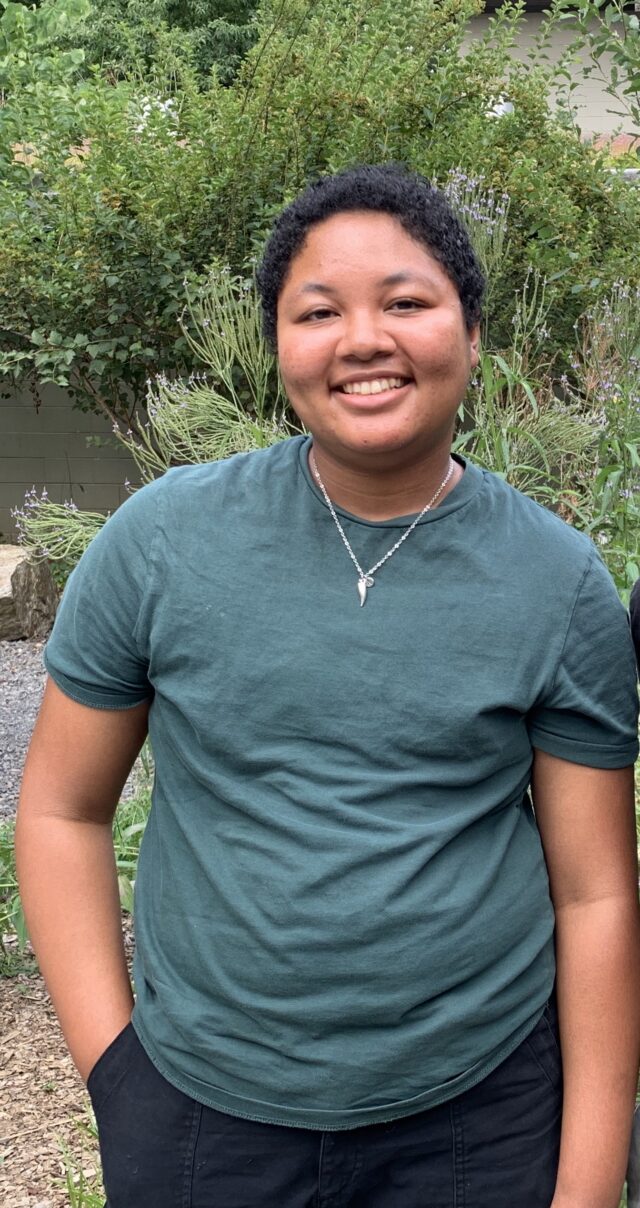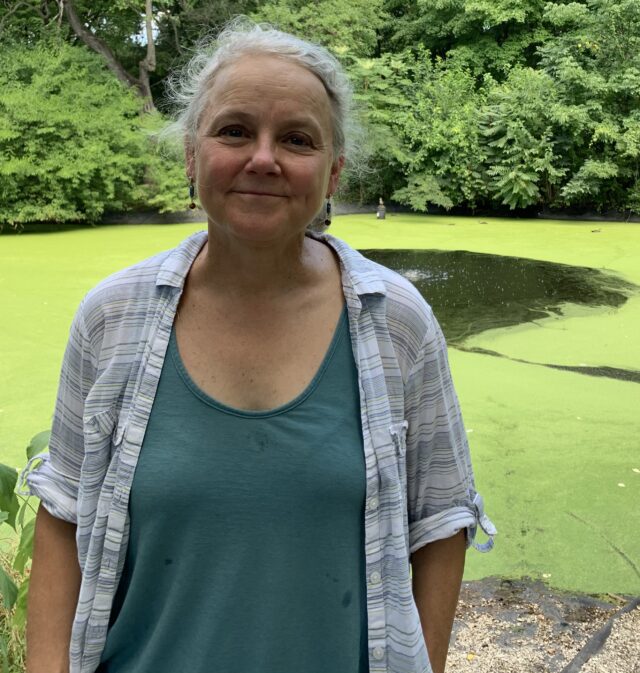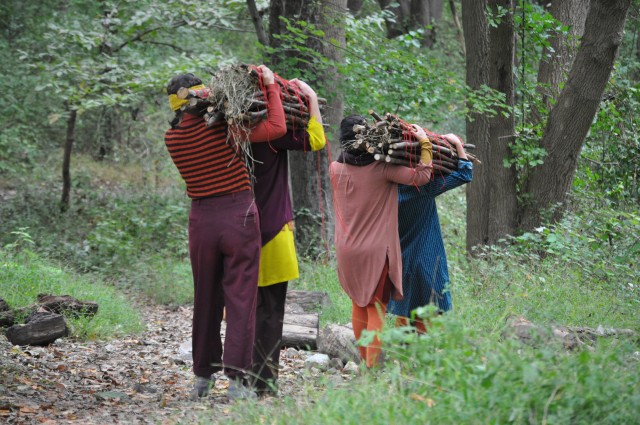LandLab is the Schuylkill Center’s immersive artist-in-residence program, providing artists or teams with resources and support to create innovative, site-specific installations or performative artworks. During their residencies, artists grapple with the human history of flawed land stewardship and envision functional solutions and paths towards behavioral change.
2023-2023 Artist in Residence

Bitter Kalli
Through natural dyeing, textiles, and creative data visualization, the artist will explore the complex interrelationship between bureaucracy and governance on the Schuylkill River landscape, delving into the narratives of environmental racism, bureaucracy, and resilience that have shaped and co-created the landscape. The artist seeks to chart a story of the river as it has been co-created by paperwork, plant life, and ecological relation.
Using oral histories with Black and brown Philadelphians, they will research what has shaped the riverine landscape of the Schuylkill River. In response, they will create natural dyes from plants and organic matter around the river and transform them into a series of large-scale textiles for installation.
Their exhibit will take place in Spring 2023.

Susan Hagen will create a series of miniature dioramas on the history of ornithology and bird biodiversity installed on a touring trail in our urban forest. Her outdoor art installation and accompanying pedagogical display in our visitor center’s art gallery will interweave the Center’s educational stewardship towards restoring wildlife habitats in an urban forest and connecting neighboring communities with their local environment. The site-specific installation will visualize the current conservation problem of human impact on species loss exemplified by declining bird biodiversity contextualized throughout the history of ornithology.
Hagen’s work is based on extensive research, conversations, drawings of taxidermy bird specimens, live examples, and historical artifacts. She will capture species living and migrating through our forest, study bird patterns and bird history at the Academy of Natural Sciences and the Wagner Free Institute of Science in Philadelphia, interview ornithologists, bird migration specialists, and wildlife experts, and speak with birders/bird activists in the region.
Her exhibit will take place in Fall 2023.
More about past projects HERE
Contact
Please reach out with any inquiries to art@schuylkillcenter.org

FAQ
How much of the project is expected to be determined ahead of time as opposed to emerging organically from time spent onsite during the residency?
While it’s ideal that you have some grounding idea of the project that you want to do, we do value the time you spend onsite and encourage you to lean into the idea of a “laboratory.” You can use the time to test an artistic hypothesis of a sort; you can course-correct as you uncover new information and ideas; the final product does not need to match 100% what you imagined at the beginning.
How can artists gain a better understanding of what ecological issues are relevant to the Schuylkill Center and therefore could be addressed in the work?
The best way to gain an understanding of our grounds is to come visit us, if possible. While you are welcome to talk to any of our educators or land and facilities staff, weThe best way to gain an understanding of our grounds is to come visit us, if possible. While you are welcome to talk to any of our educators or land and facilities staff, we also value the unique perspective that artists can bring to a site. If you have an understanding of widespread ecological issues such as deforestation, non-native species, erosion, and water pollution, you will likely be able to connect them readily with The Schuylkill Center.
Some of the past projects have seemed more social; are artists supposed to address both ecological and social remediation or choose one or the other?
Given the limited amount of time and resources and the desire for a final outcome, we suggest you choose one of the two to focus on—though they are, of course, related. For this residency we also expect some sort of public community engagement.
How do artists connect with scientists to consult with?
The Schuylkill Center is well connected within the environmental science community and the chosen artist(s) can be connected with any number of local scientists, in addition to our own staff. Please share in your application any ideas, preferences or even connections you may have already.
How long will the artists spend on site?
The residency can start as early as August 2022 and the final outcome is expected by spring of 2023. The chosen artist(s) is encouraged to spend as much time on site during that window as possible and necessary for understanding the project undertaken.
Are artists permitted to harvest plants onsite?
Yes, but under the supervision of one of our staff members. Please talk with us about what and how much.
